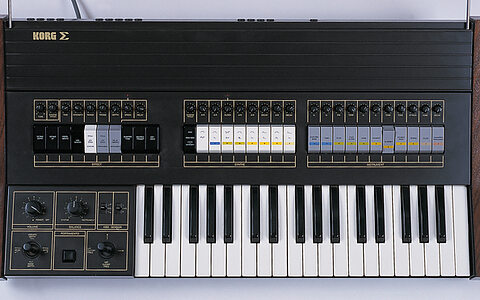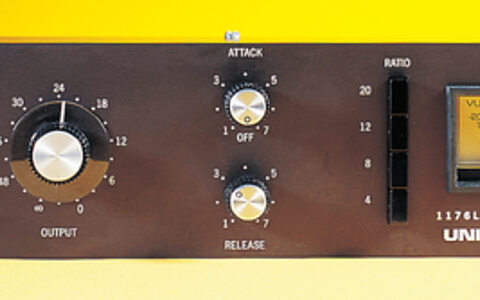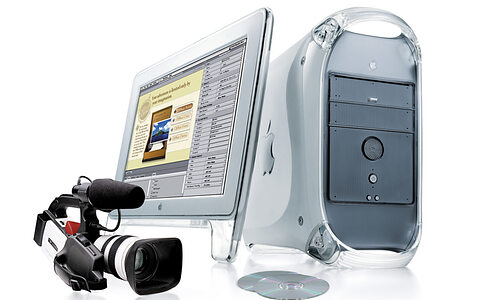
Q. What's the best way to mic a classical chamber trio?
I have recorded a demo CD of my acoustic folk duo. This project has been successful, so much so that a chamber trio I know...
To find the exact phrase, put the words in quotes or join them together with a plus sign e.g. live+recording or "live recording".
To find, say, all live recording articles that mention Avid, enter: live+recording +avid - and use sidebar filters to narrow down searches further.

I have recorded a demo CD of my acoustic folk duo. This project has been successful, so much so that a chamber trio I know...

I have just read your review of Emagic's Sound Diver editor/librarian software in this month's edition of Sound On Sound...

In Simon Price's recent series [Pro Tools Explained, SOS February‑April 2001], he mentioned that in order to...

Clavia's new third-generation Nord Lead synthesizer augments its familiar virtual analogue modelling with enhanced FM synthesis capabilities, and introduces a striking new visual twist to the usual controller-rich Nord user interface. Simon Trask trips the light fantastic with Clavia's new Lead...

Hugh Robjohns tests an innovative full-range speaker system, which somehow manages to get 12 separate drivers working in harmony.

More and more vintage hardware instruments are now being modelled as virtual instrument plug-ins. With EVP88, Emagic have turned their attention to electric pianos, producing a Logic-only plug-in which models several different piano types. Paul White discovers that the tines they are a-changin'...


Last month we looked at how analogue modules can reproduce the sound of a real trumpet. All very well if you own a wall-sized modular system — but what if your means are more limited? Gordon Reid adapts theory to practice with a Minimoog.

Originally planned as a limited edition, the 37-note Virus Indigo virtual analogue keyboard synth surprised even its makers - demand ran so high that it became a separate product. Gordon Reid considers the newest strain of this retro Virus, and the latest v4 OS software revision.

A new high-specification VIFA speaker cone makes its debut in AVI's latest compact monitors. Paul White puts them to the test.

Paul White evaluates the DS501, which adds a new Peak Punch feature to Drawmer's classic side-chain filter gate design.

Roland followed their first MC303 Groovebox with the well-specified MC505. Now there's the MC307, with a spec more like the 505, a price closer to that of the 303, and more DJ-friendly features.

Is it a home organ-style keyboard? Is it a real synth? Is it a complete crock? Paul Ward explores the Korg Sigma, an instrument with a serious identity crisis...

Cakewalk's Pro Audio range is one of the most widely used sequencers in the PC world, but their latest package has a new name and a new image, as well as lots of new features. Martin Walker tries out Sonar.

It may look somewhat toy-like, but Yamaha's latest desktop synth workstation is actually anything but - it features serious synthesis from the AN1x and a host of performance-friendly controls. Chris Carter gets modelling...

More than 30 years after the original 1176 was introduced, it has been put back into production by the designer's sons. Hugh Robjohns investigates the latest and most authentic reproduction of this classic 1960s compressor.

Video and audio technologies are converging in all sorts of ways: musicians can now consider creating demos on DVD, and developments in digital video may show the way for better ways of recording digital audio. Dave Shapton puts it all together.

After three decades powering the rhythm section of the Rolling Stones, Bill Wyman has gone back to the music he grew up with, with help from the impressive array of talent that is his Rhythm Kings. Sam Inglis hears how their new album Double Bill was made.

Number one UK hit 'Whole Again' took Atomic Kitten from the girl-band niche to a universal audience, and made an impressive first single release for co-writers and co-producers Bill Padley and Jeremy Godfrey. Sam Inglis hears the story.

You may know Naim as a UK-based hi-fi manufacturer, but they also own a record label, and apply the same esoteric standards to the records they release as they do to their audio equipment. Phil Ward investigates the label's obsession with sound and explains their recording and mastering techniques.